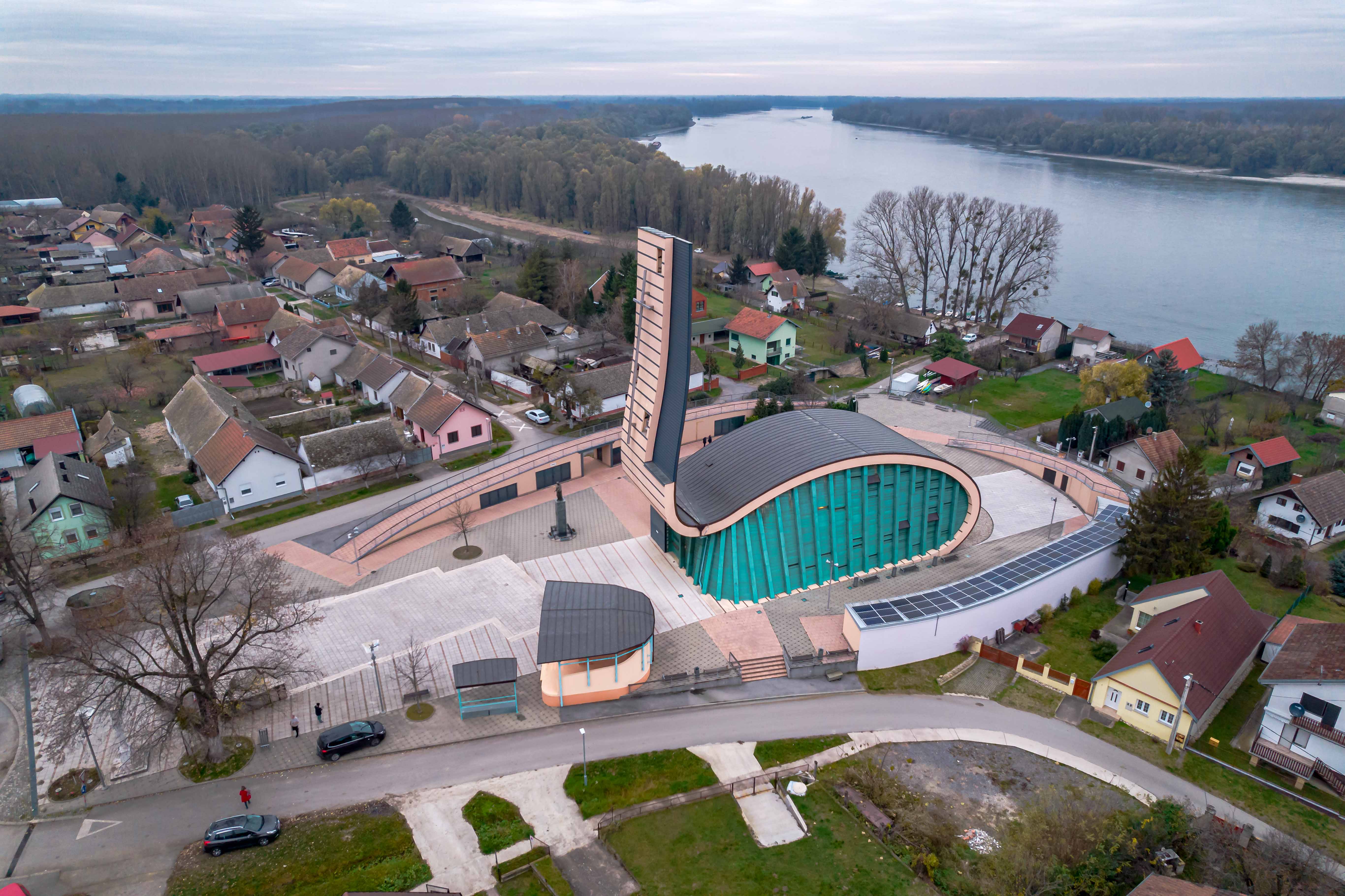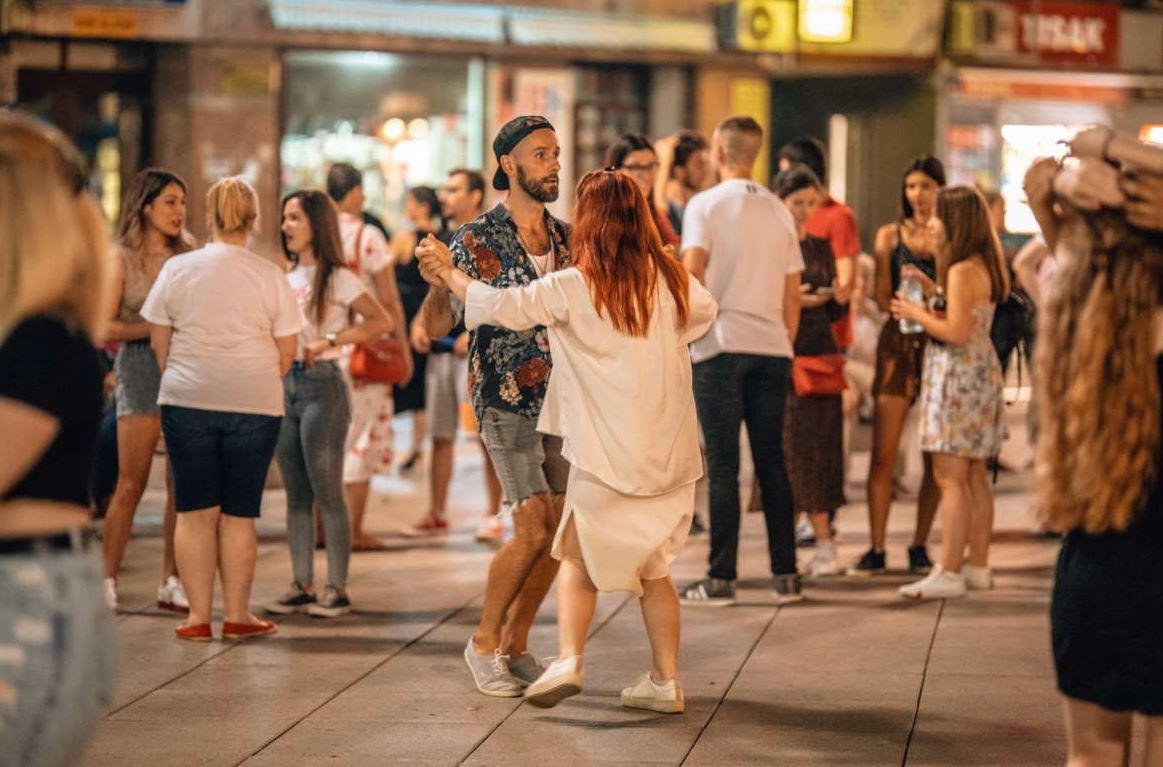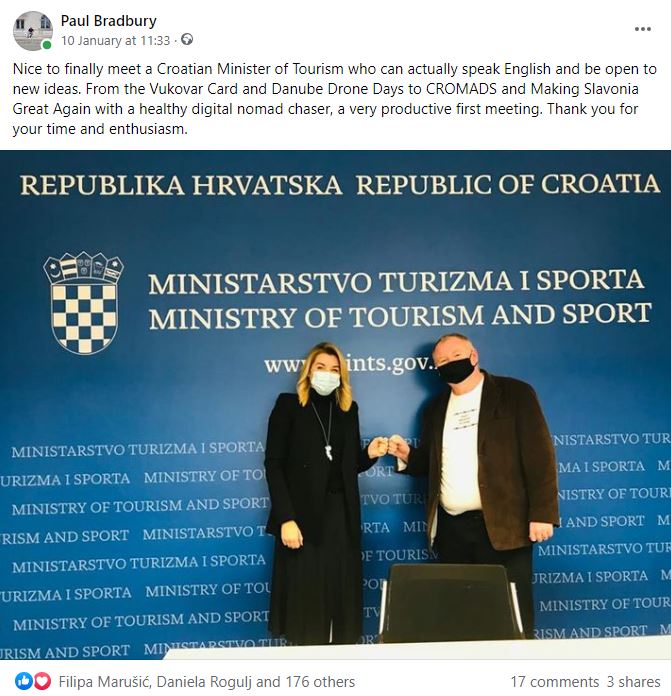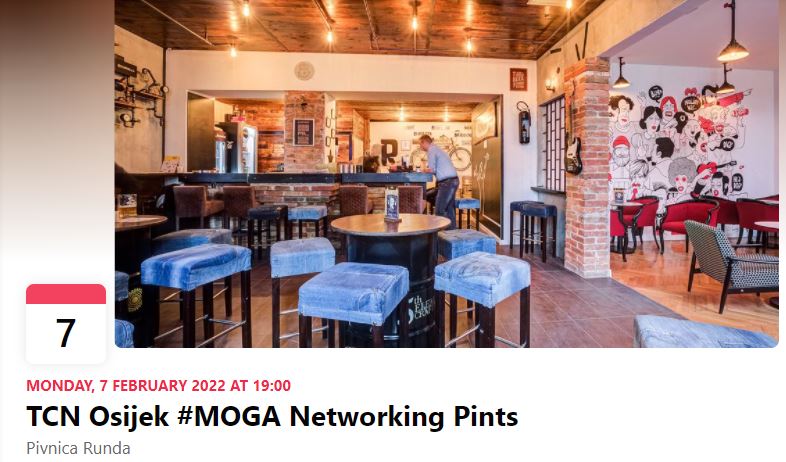Discover the Croatian Danube: Fishing Village of Aljmaš (Part 1)
August 15, 2022 – The blue, the mighty, the grand, the Danube. One of the most important rivers in the world that was the lifeline of an entire civilisation in Vučedol remains an aspect of life without which life would be unimaginable everywhere along its course. The German, the Austrian, and the Hungarian Danube are well known. It is time to discover the Croatian Danube. From Osijek to Ilok, its course is adorned with picturesque little villages. In part one of the series, welcome to Aljmaš.
Located some twenty-six kilometres east of Osijek and the same distance north of Vukovar, between the slopes of Alma Mons, or Fruška Gora, and the bank of the Danube, this small fishing village patiently awaits the arrival of all who seek peace and quiet. Four streets, a thousand or so houses, one big church, some 350 people. Is that all there is? Of course not. Hundreds of years of history, legends, traditions, and the best fish stew you would ever hope to try. An easy, quiet lifestyle with all that you might need. Even business opportunities.
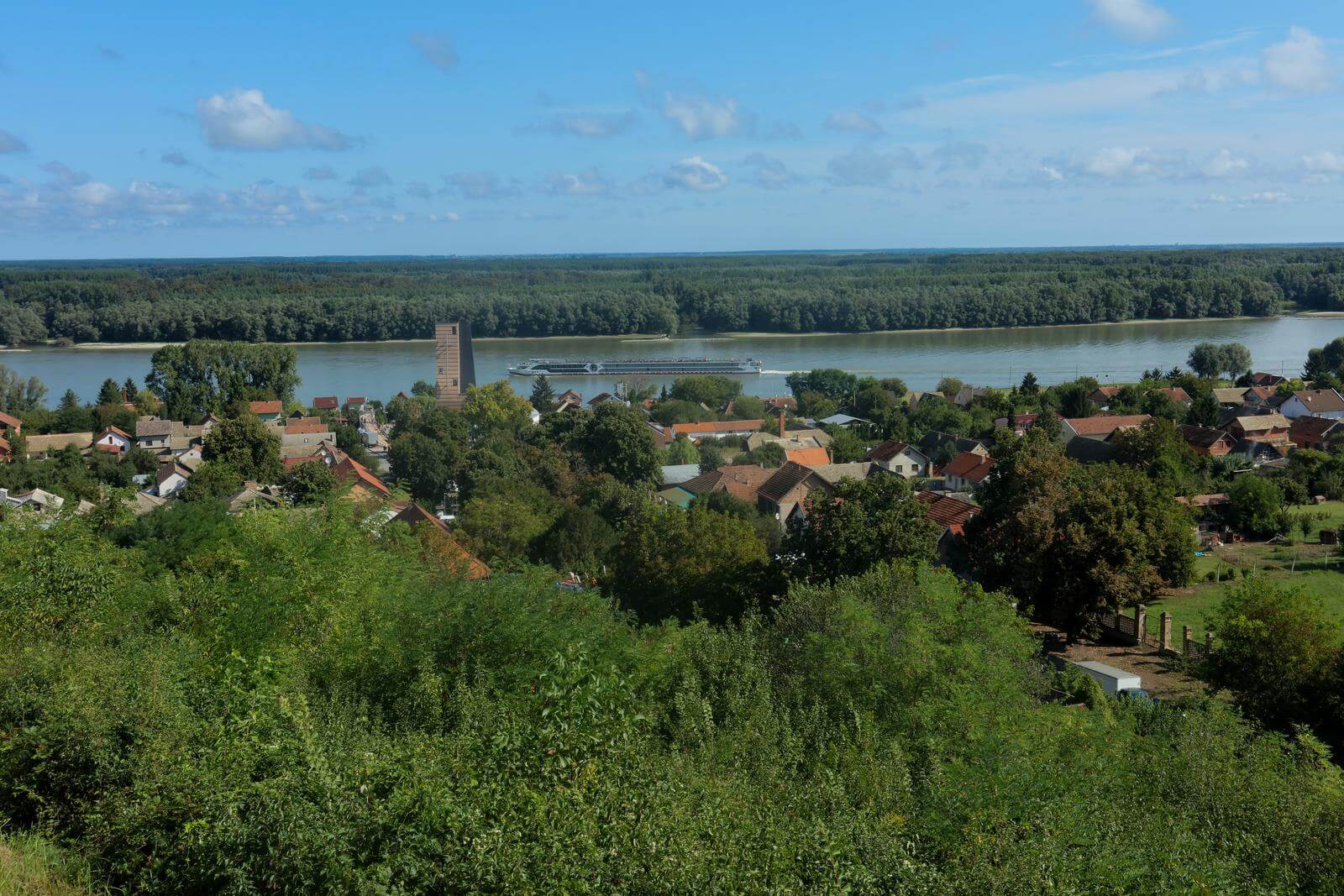
Photo: Dubravka Petric (PIXSELL)
It has been 785 years since the first mention of the name Aljmaš. The area itself, though, has hosted life since long before, and the locals keep finding remains of Roman architecture to this day. With its geographical position in proximity to the river, the settlement surely played an important role in the Roman empire. A theory excitedly discussed among the locals is that a yet-to-be-located battle between the Romans and the Illyrians might have happened in the valley of Aljmaš itself.
The historical importance of the village also lies in the fact that the well-known Hungarian humanist and poet Janus Panonnius was born in none other than Aljmaš. Though Čazma was previously believed to be his birthplace, his verses confirm that it was indeed “Where the Drava surrounds its name and water to the Danube”. And during the Austro-Hungarian rule, it was the beloved summer garden of Maria Theresa.
As for other popular sources of debate, there is an interesting theory that explores the possibility that Novi Sad in Serbia was built by settlers from Aljmaš, somewhat resembling the New Amsterdam story. In the early 18th century, when the plague was the main threat in Europe, a group of people from Aljmaš apparently sailed out on a raft down the Danube to escape the disease. They might have settled some 130 km east, around the area of today’s Novi Sad. To confirm this theory, the locals point out that the streets of Aljmaš were called sadovi, which is an old Slavic word for garden, and the name Novi Sad, you guessed it, means a new garden. Secondly, Novi Sad, the city is only about three hundred years old, which would correspond to the time of movement.
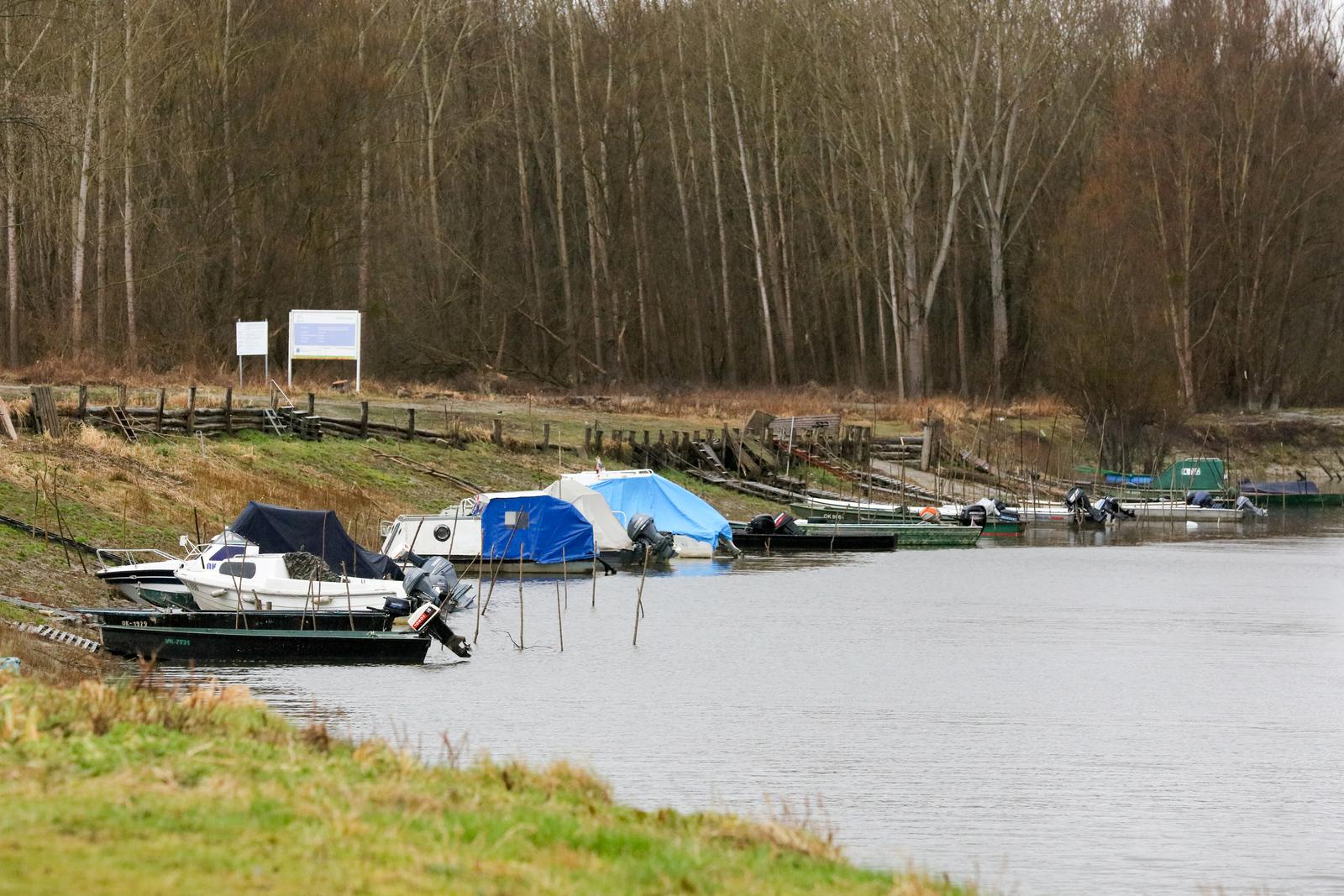
Photo: Dubravka Petric (PIXSELL)
Modern Aljmaš lived its golden age between the two world wars, when 1446 people lived there, who owned 46 businesses, and the village had 2 butchers and 3 bakeries. It was an important port on the way from the Black Sea to Budapest, which, as you can imagine, ensured that the birth rate would steadily grow. It was also an important weekend and summer home for the nobles of Osijek and Vukovar who needed a quiet place in nature, especially those who liked fishing. After the second world war, as well as the Homeland war, the population of Aljmaš unfortunately significantly declined, leaving it at approximately a quarter of what it used to be.
It is, however, slowly being rediscovered. Trying to escape a busy hectic lifestyle, many will naturally gravitate towards picturesque little places like this to spend their holidays, weekends, or retirement, but people have also started permanently moving there to live a relaxed life and raise their children in a safe environment where nature still dictates the way of life.
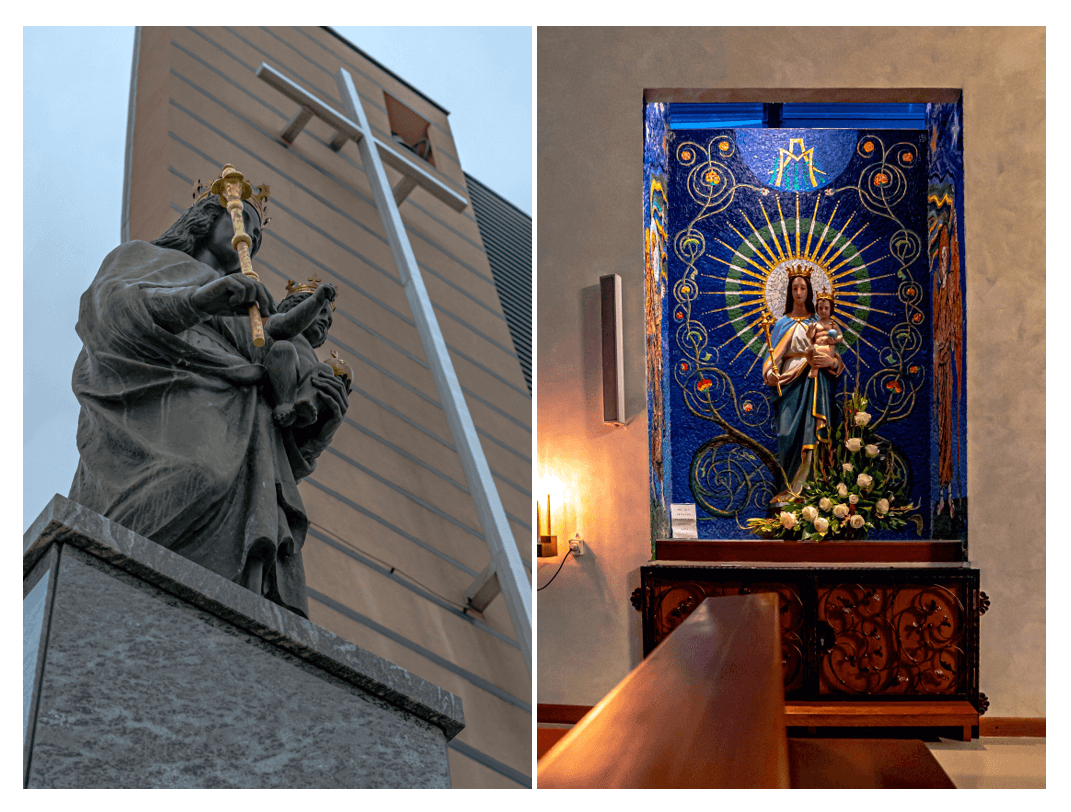
Photos: Steve Tsentserensky
Catholicism has always played a very important role here, so much so that even during the Ottoman rule when many were forced to convert to Islam, Aljmaš remained a Catholic settlement. Nowadays, it is one of the famous places of worship and pilgrimage in the name of Mary. Even though a legend does exist of a sighting of the Virgin Mary, the reason why Aljmaš became her home is different. In 1704, a statue of Mary was brought from the village of Lug in Baranja to save it from the rebellion that was brewing there against the Habsburg monarchy. A humble little church made of branches and mud stood in Aljmaš to provide shelter. Mary has been the symbol of Aljmaš ever since. In 1846 the village church burnt down, along with the statue, only leaving a painting of the former statue. A new baroque church was built, and the bishop Josip Juraj Strossmayer financed a new statue to be made in Vienna. During the Homeland war in 1991, the said church was heavily bombarded and taken down, and the statue was believed to be destroyed. In 1992, however, a Russian UN soldier found the statue with only the crown and a part of one arm missing, dressed it in his vest, and put a helmet on it to conceal it and safely transport it to Osijek. Just like the people of Aljmaš, it spent years in exile. It remained in Osijek until 1998 when it was taken back to Aljmaš. The road, of course, was the Danube. It was taken on a boat, with hundreds of fishing boats following.
Photo: Steve Tsentserensky
With the old church destroyed and the statue of Mary having been returned to Aljmaš, the local government decided to invest in a new place for worship and built the new, monumental church in 2003. It is famous for its architecture, but this does spark debate among the locals. While some think that its modern design draws people in, others disagree since its architectural integrity might not be the best, and it is questionable how long the church will withstand the humidity and the winds from the Danube.
One thing is for sure, though. The church is still an important place not only for the residents of Aljmaš but for many who visit to pray and contemplate. Without a doubt, the most important date remains today, August 15, marking the Assumption of Mary. Year after year, the holy mass in the open gathers thousands of pilgrims. Though it is a quiet celebration, the village comes alive in its former glory with people walking, talking, praying, and the children all gathering around the little stalls for ice cream, cotton candy, or plastic toys.
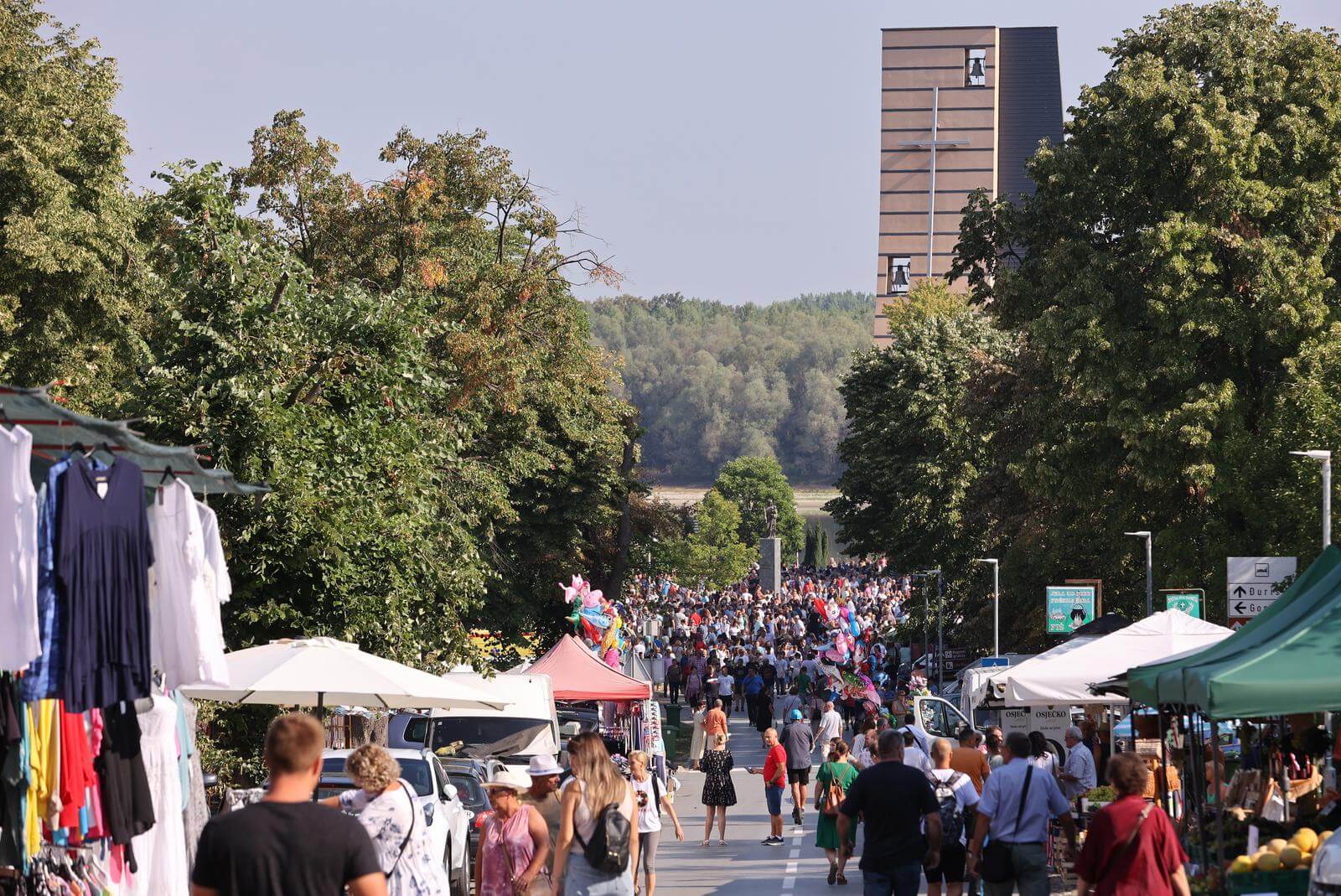
Photo: Davor Javorovic (PIXSELL)
Even though August 15 remains the most important day for Aljmaš, it is not the only day when something happens. The locals gathered in cultural societies make sure that the traditions keep on living, and that daily life is still eventful. To find out more about the local customs and traditions which live on, how the village Google makes sure they know it all, why foreigners keep buying houses there, and when you should make sure you visit, stay tuned for part 2 next week on TCN.
Special thanks to Marina, a tourist guide from Aljmaš, who works hard to keep tradition alive and who happily shared her stories with TCN.
How good is your knowledge of eastern Croatia? Take the CROMADS test above - how many places do you recognise?
For more, make sure to check out our dedicated Lifestyle section.
Vučedol Culture Museum Invites You to Out of the Box Virtual Exhibition
August 5, 2022 – The Vučedol Culture Museum in Vukovar remains a truly special place. Its unique location, architecture, and the dedication of those who make things happen there day after day, all keep drawing you back and leave you longing for more. This time, the invitation is out for all who like anything digital, 3D, and in general thinking out of the box. A new interactive exhibition nicknamed Vučedolac izvan okvira (The Vučedol Man Outside His Box) is open until the end of August.
Tportal followed up with the author of the exhibition, Darko Bilandžić, who is also the head of marketing at the Vučedol Culture Museum. He points out that, thanks to their approach to marketing and the possibilities of the digital world, he decided to offer the museum’s visitors a digital insight into the life of the prehistoric people of Vučedol.
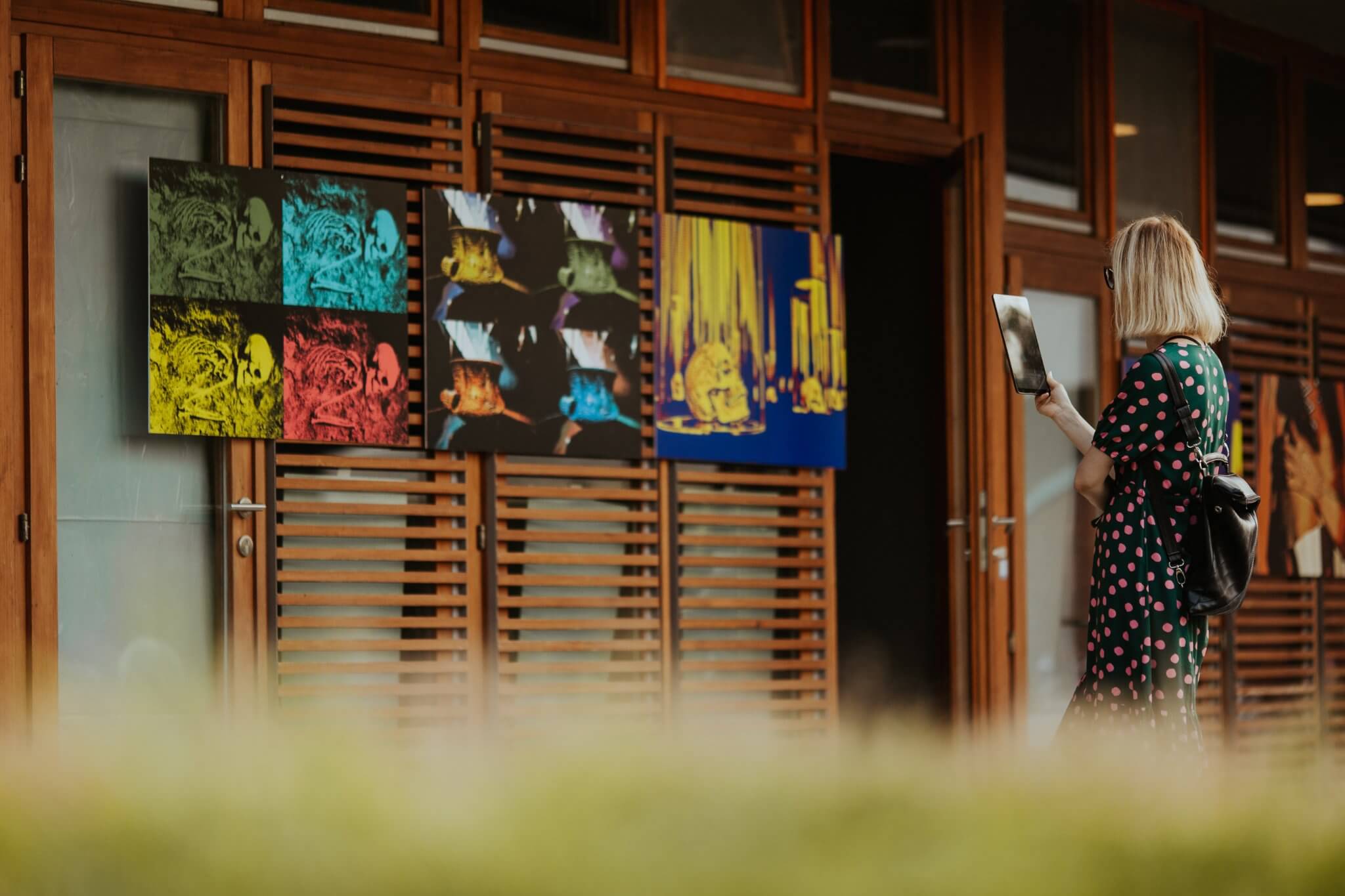
Photo: Vučedol Culture Museum
“The people of Vučedol were advanced as a culture and in many ways ahead of many at that time. We could say that they thought outside the box. I believe that we have passed the time of static museums, which require visitors to walk through them and read the materials next to the exhibits. In addition to improving our website, we decided to go a step further and create an interactive exhibition using augmented reality technology”, says Bilandžić.
He explains that ten tablets are available to visitors, which they can use to scan ten posters to find the corresponding 3D, audio, text, or video content.
“With this type of presentation, we want to get even closer to the younger generation and keep up with the modern ways of presenting museum material, and thus further build our digital archive. I must admit that the feedback of our visitors pleasantly surprised me, as it clearly shows how important it is to continue working in the direction of new technologies”, says Darko Bilandžić.
He adds that even as a child he was interested in advanced technologies and that robots were his favourite toys.
“That passion for new and advanced technologies always stayed with me. Back in 2016, at the Vučedol Culture Museum, we had visitors take a virtual walk through the museum with the help of VR glasses”, he recalls.
He added that the “trigger” for greater involvement in the digital presentation of cultural material was the coronavirus pandemic when many museums were closed.
“It made apparent that a lot of museums were not ready for online work. We saw our chance there and I dove into learning and education, and this exhibition is the first result of that”, he says proudly, adding that without digital technologies in the future it will be difficult to imagine the operation of any museum.
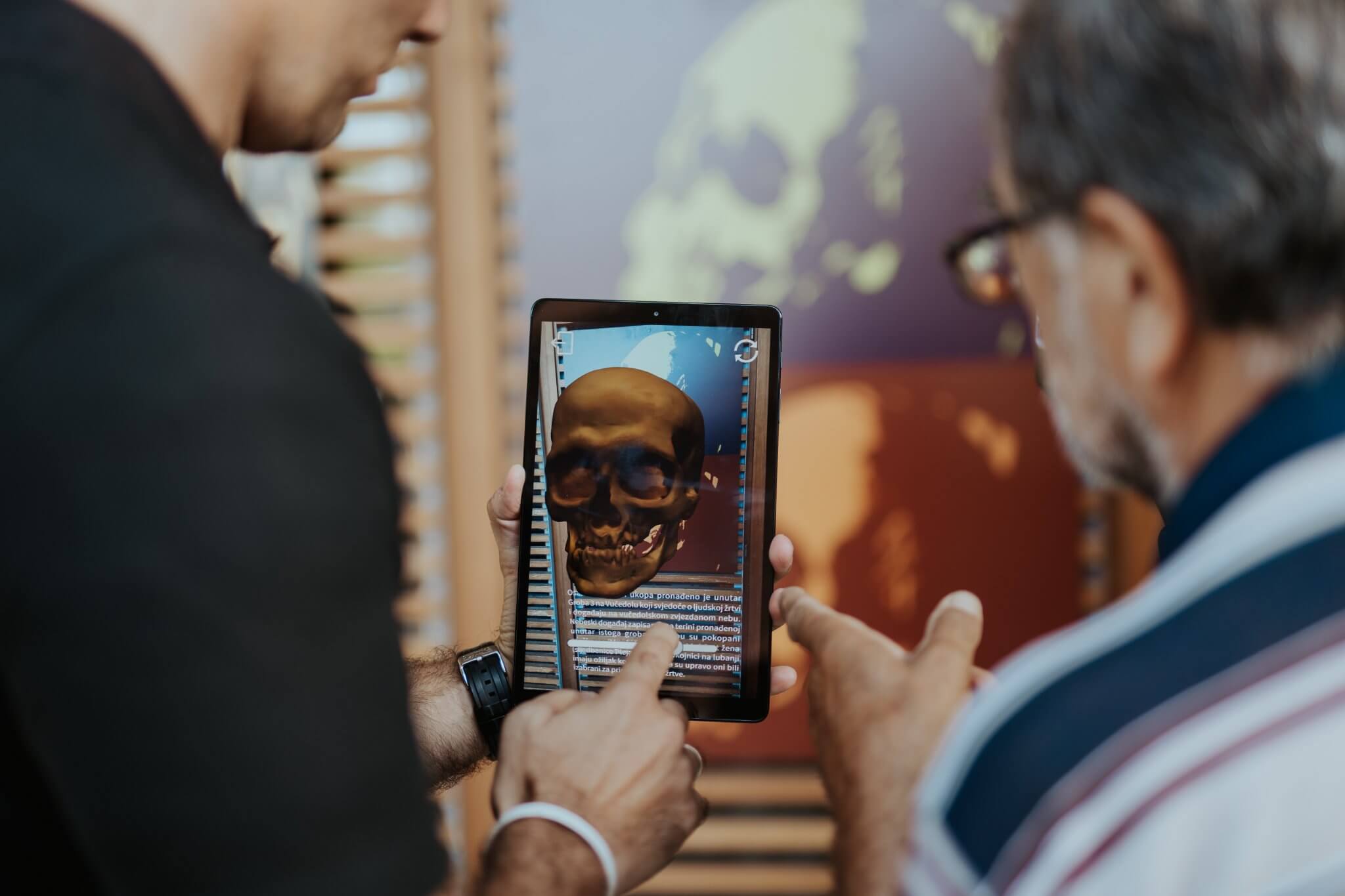
Photo: Vučedol Culture Museum
This marketing expert believes that augmented reality offers museums unimagined opportunities for development and getting closer to citizens of all ages.
“We especially want to get closer to young people and get them interested in everything that the Vučedol Culture Museum offers, and it offers many things that define today's life and reality”, concludes Darko Bilandžić.
Darko is a marketing expert who has a passion for a reality that is virtual, augmented, or extended. If you would like to know more about that, make sure to check out TCN’s interview with Darko on Culex, a successful VR company that he co-owns.
For more on lifestyle in Croatia, check out our dedicated lifestyle section.
New, Fourth Mammoth Tooth Found in Mohovo near Ilok
August 2, 2022 – Maybe you have never heard of Mohovo, and maybe you know that they keep finding mammoth teeth there... There is really no in-between. A new, fourth mammoth tooth was found on Saturday, 30th July.
As SiB reports, ten years after he found the first mammoth tooth in his village, Goran Popović from Mohovo found another, fourth, mammoth tooth on Saturday.
He informed his friends and the public about the phenomenal discovery by posting on Facebook, stating that he was filled with happiness, emotions, and optimism.
"I had that instinct again, walked through our beautiful village, and then it happened – the fourth mammoth tooth. All of a sudden, a part of the hill collapsed and the tooth just popped out. Now I'm completely convinced that this is no longer a coincidence", he wrote and invited everyone to join in and help, because a lot of support is needed to start the systematic search of the location.
SiB spoke about this discovery with Goran, who, still under a strong impression, said that not a single find was the result of purposeful digging and searching, but that he found each tooth completely by accident.
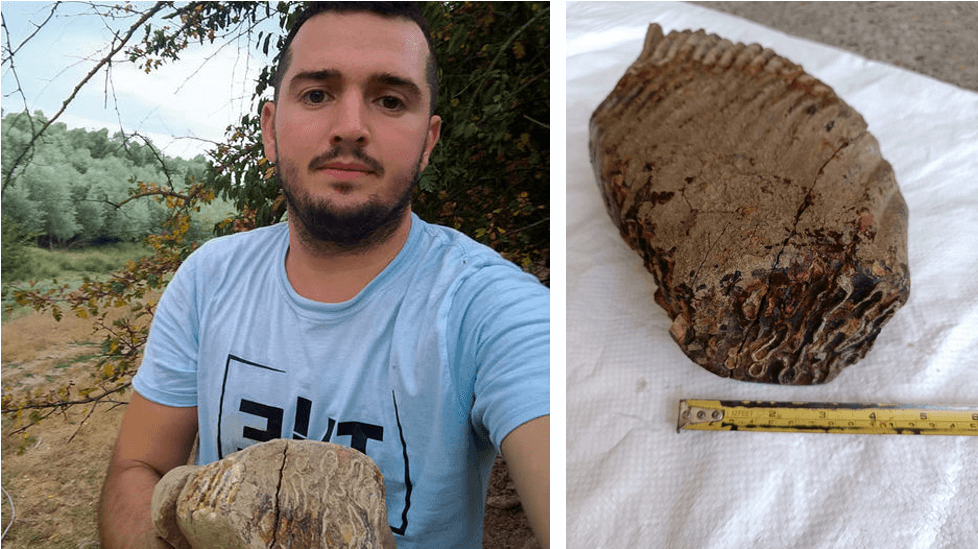
Photos by Dolina Mamuta
“Last year, the Minister of Culture, Nina Obuljen Koržinek, visited the site of the discovery, the county and city authorities came, and we received promises from all of them that they would do everything in their power to start archaeological research. I know that the activities in the wider Vukovar area focus on Vučedol, but I believe that the finding of another tooth will motivate the authorities to pay attention to Mohovo as well. It would be an important step in the promotion of our small village and it would certainly make it more attractive not only in terms of archeology but also in terms of culture and tourism”, said Popović.
The relevant ministry and the Ilok City Museum were immediately informed about the discovery, as well as the City of Ilok, and the Vukovar-Srijem County. He emphasized that this place with only two hundred inhabitants obviously hides great secrets that experts need to investigate. It all started in the fall of 2012 when, while digging a septic tank in an orchard, he found the first fossil remains of a woolly mammoth, and a discovery was made four years later in another location. Goran states that short research, in addition to the woolly mammoth and the woolly rhinoceros, led to the discovery of fossil remains of a hyena, a wild horse, and a bison. Four years after the second discovery, there was a third one, when the fossil remains of a mammoth were found again near the village pond. Realizing the potential hidden in their village, several young residents of Mohovo founded the association Dolina Mamuta (Mammoth Valley). They organised workshops, installed a straw sculpture of a woolly mammoth, a woolly rhinoceros, and a hyena in the village centre, and launched the events "Advent in Mohovo" and "Mammothfest", the second edition of which is planned for this October.
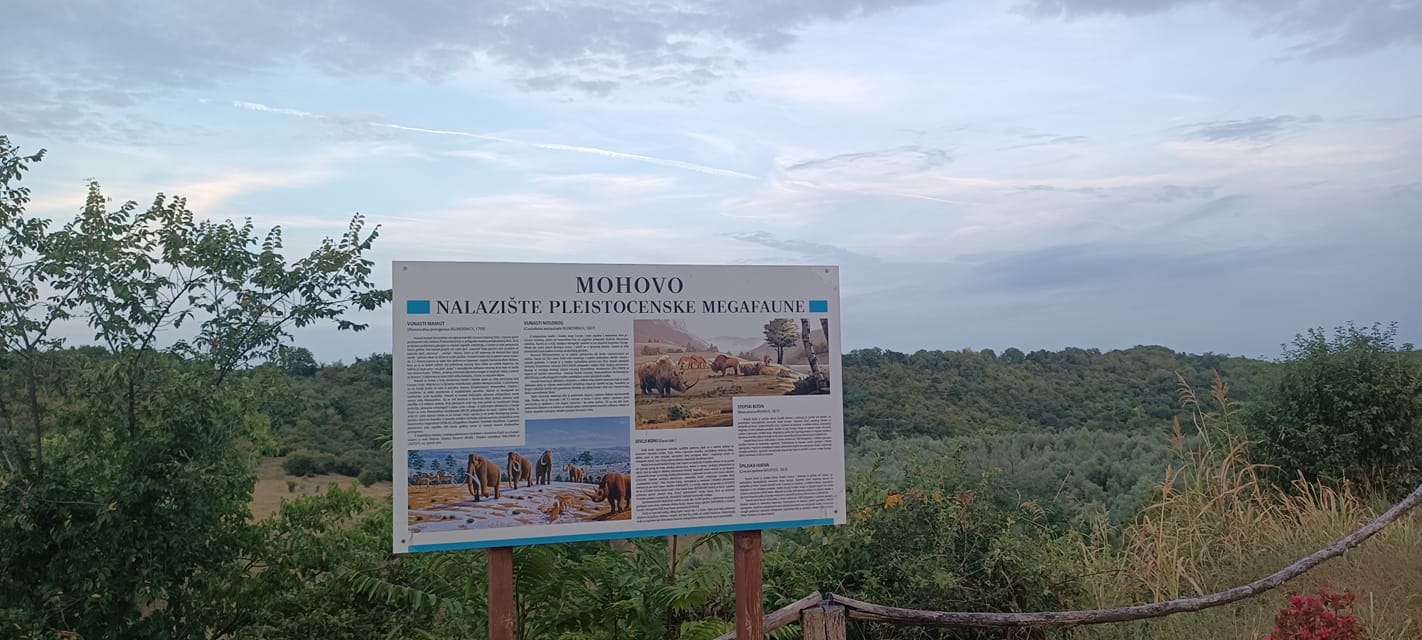
Photo by Dolina Mamuta
“The creation of a sculpture made of solid material is nearing completion, for which we were provided funds through donations after the straw sculpture was destroyed in a fire.
For the second "Mammothfest", we plan to organize an exhibition about the findings so far and additionally motivate the authorities for systematic research” he stated.
For more, check out our lifestyle section.
Best Tourism Villages: Baranja Village Zmajevac is Croatian Candidate
July the 13th, 2022 - The Baranja village Zmajevac is the Croatian candidate for the Best Tourism Villages, which will shine a spotlight on Croatia's enormous rural tourism potential away from the glitz and glam of the Adriatic coastline.
As Poslovni Dnevnik writes, the Baranja village Zmajevac is a Croatian candidate for the aforementioned Best Tourism Villages, a designation under the auspices of the UN World Tourism Organisation that is awarded to a village that is an outstanding example of a rural tourist destination, writes Dnevnik.hr
Zmajevac is a village deep in the heart of the Eastern Croatian region of Baranja which is very well known for its sourdough, is surrounded by vineyards and wine roads, and which boasts a rich offer of local specialties.
Caslav Kostov, head of a tasting room there, spoke about some of the most popular products the Bsranja village Zmajevac can boast of: "Tourists most often choose local fish specialties. Of course, there's also duck meat, not to mention loin, Slavonian black pig cheeks, black pig neck... As for the desserts, the most common are local pastries with jam and poppy seed noodles," he said.
Almost every single house in the village has a wine cellar, but the Gerstmajer family is the forerunner in Zmajevac, as well as in the whole of Baranja. Ivan is the fourth generation in his family to be doing this: "We currently own thirteen hectares of vineyards. Our primary activity is the production of grapes and wine, and we also offer some homemade food that my father and I prepare ourselves," said Ivan Gerstmajer, a winegrower and winemaker.
In addition to the rich gastronomic offer and the famous ''wine marathon'' to be enjoyed in this Eastern Croatian destination, the local nature offers visitors to the Baranja village Zmajevac a true oasis of peace.
"I also gave the rooms I let out local names from this area,'' said restaurateur Blazenka Nadj. "My guests are mostly from the City of Zagreb, but we also have a lot of foreign guests, as well as a lot of hunters, fishermen and companies that come for team building," she said.
For more, make sure to check out our dedicated travel section.
Đakovo Hosting Ghetto Games as Part of EUs Sports Initiative
April 21, 2022 - Đakovo is one of the hosting cities of the Ghetto Games Euroleague, a unique street football tournament. It was established as part of the "Medicines for Europe's Ghettos" initiative, with the main idea being the use of street sports as "medicine" for underdeveloped areas in Eruope.
It is supported by the European Union's Erasmus+ program in cooperation with some of the largest street sports organisations in Eruope, including Ghetto Games from Latvia, DGI from Denmark, Fryshusetfrom Sweden, Malta BMX from Malta and the Estonian Street Sports Federation.
As Glas Slavonije writes, the Croatian portion of the tournament will take place at Strossmayer Square in Đakovo, starting on Friday, 22 April at 5 pm. The competition itself takes place in a cage (which is approximately 18 meters long and 10 meters wide), and three such cages will be ready for the competition. Two age groups are participating in the competition, one including ages 16+ and the other focusing on those younger than 16. There will also be a special category for girls/women. As for the entertainment aspect, a competition with the best eight freestylers from this part of Europe is planned. Online qualifications have taken place for this part of the tournament. Additionally, there will be a "1 v 1" competition in a specialized cage, smaller than the others.
The tournament is held in nine other EU cities (Amsterdam, Budapest, Prague, Copenhagen, Berlin, Warsaw, Rome…), which means that Đakovo has now taken a spot on this prestige list as one of the great ones. The arrival of numerous sports participants, clubs, players and influencers from Slavonia is expected. The competition will be live streamed worldwide, and the event will be broadcast on many channels on social networks.
The partners include the EU, Ghetto Games, the City of Đakovo, the Tourist Board of the City of Đakovo, as well as Rafael Spajić, the man who brought Ghetto Games to Đakovo in the first place, after having played street football for over 17 years.
For more, check out our lifestyle section.
Eastern Croatia Attracts Increasing Number of Domestic Tourists
April 17, 2022 – Good news coming from eastern Croatia, with trends showing an increased interest of domestic tourists in the golden fields, fiery stews, and the sweetest wines of Slavonia.
As hrv.hr writes, last year's trend of increasing the number of overnight stays in eastern Croatia continues this year as well.
According to the Vukovar-Srijem County Tourist Board (TZ VSŽ) for the first three months of this year, the number of overnight stays in this part of Croatia increased by more than 40 percent compared to the same period last year.
Most of the guests are domestic tourists who have had a positive impact on the county's tourist results with their arrivals and overnight stays, and it is evident that their interest in the eastern part of Croatia is finally stable and growing.
According to the director of the Vukovar-Srijem County Tourist Board, Rujana Bušić Srpak, the results of the first quarter, but also the whole of last year, show that tourism can be maintained even in crises such as a pandemic.
“It is important to emphasize that the survival of tourism in the continental part of Croatia should be credited to domestic guests. They are in our focus, and they are the ones who can maintain the tourist movement even in crises, revive the tourist potential, and stimulate the domestic economy. The majority of our guests come from Croatia, and almost half of them are from Zagreb and the Zagreb County”, says Rujana Bušić Srpak, adding that in the wave of current price increases, the county still has affordable prices and provides excellent value for money.
For more, check out our lifestyle section.
Festivities in Eastern Slavonia: Things To Do in Spring
18 March 2022 - Spring is on the horizon! Ceremonies and events are slowly but surely moving outdoors and since TCN already covered “Five Places You Must Visit During Spring in Croatia”, this is a look into what festivities in Eastern Slavonia are happening during the new season.
Firstly, we need to start with the biggest city of Eastern Slavonia - Osijek. As usual, the greenest city in Croatia has various events that can fulfill any person's preferences: from music, film, theater, and traditional events to sports and other activities that include all of citizens and guests. Since there is no shortage of events this spring season, we had to single out a few that will happen soon. It doesn't hurt to mention again that Osijek is going to host the 29th Porin Music Awards on the 25th of March. For more details, check the article here.
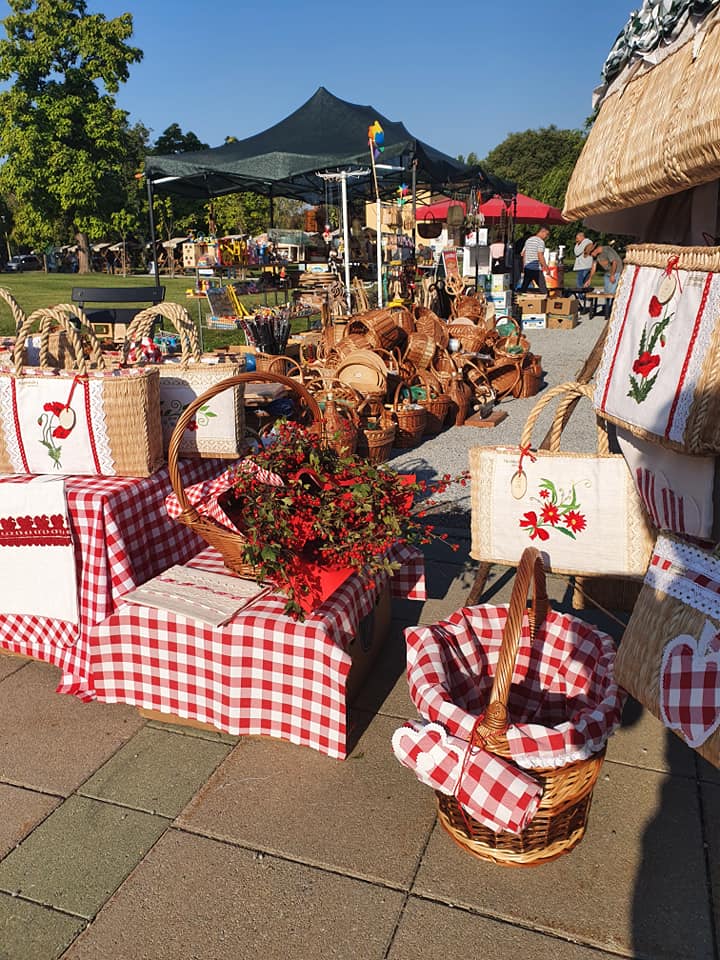
Antiques Fair, (Photo:Okusi sreće by Pavica/Facebook)
Antiques Fair - 2nd of April
The citizens of Osijek love their culture and heritage so it’s not surprising that the Antiques Fair is one the most popular events in the city. From old gramophone records to lost books and masterpieces from local unknown artists, this festivity is for everyone. Excitement as you pass by a sea of stalls that potentially contain a lost “treasure”? It is guaranteed only at the Osijek Antique Fair that is usually held on the first Saturday every month in the Old Town of the city - Tvrđa. However, the next Antique Fair will be held in King Držislav Park near the famous urban statue The Shell (Školjka) on the 2nd of April. The Park is located just across from Tvrđa, so it is not hard to find it. You can check for more here.
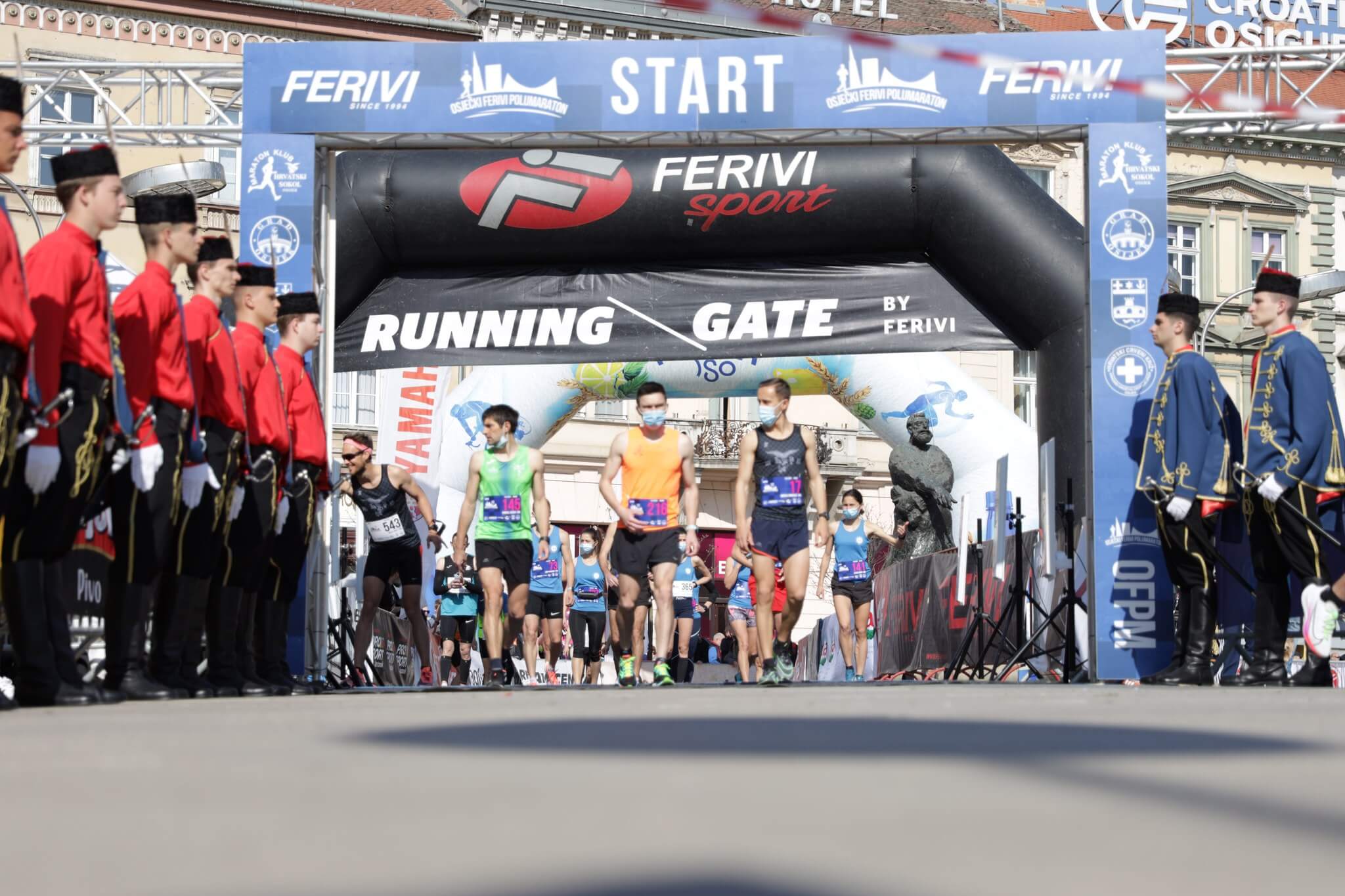
Osijek Ferivi Half Marathon (Photo Osječki Ferivi Polumaraton/Facebook)
18th Osijek Ferivi Half marathon - 9th of April 2022
This event, as the name suggests, will take place in Osijek, with four different races included: a half marathon (21.1 km), relay (3 x 7 km), citizens’ race (5 km), and a race for the youngest - children. These events will be accompanied by a music festival, instrumental, dance, and singing groups with a goal to entertain the visitors and competitors. Since its foundation, Osijek Ferivi Half Marathon has had an increase in the number of participants every single year and it’s becoming one of the biggest sporting events in Osijek and its surroundings. If you’re interested, the application is still open for everyone - it doesn’t matter if you’re a professional or casual, everyone is welcome!
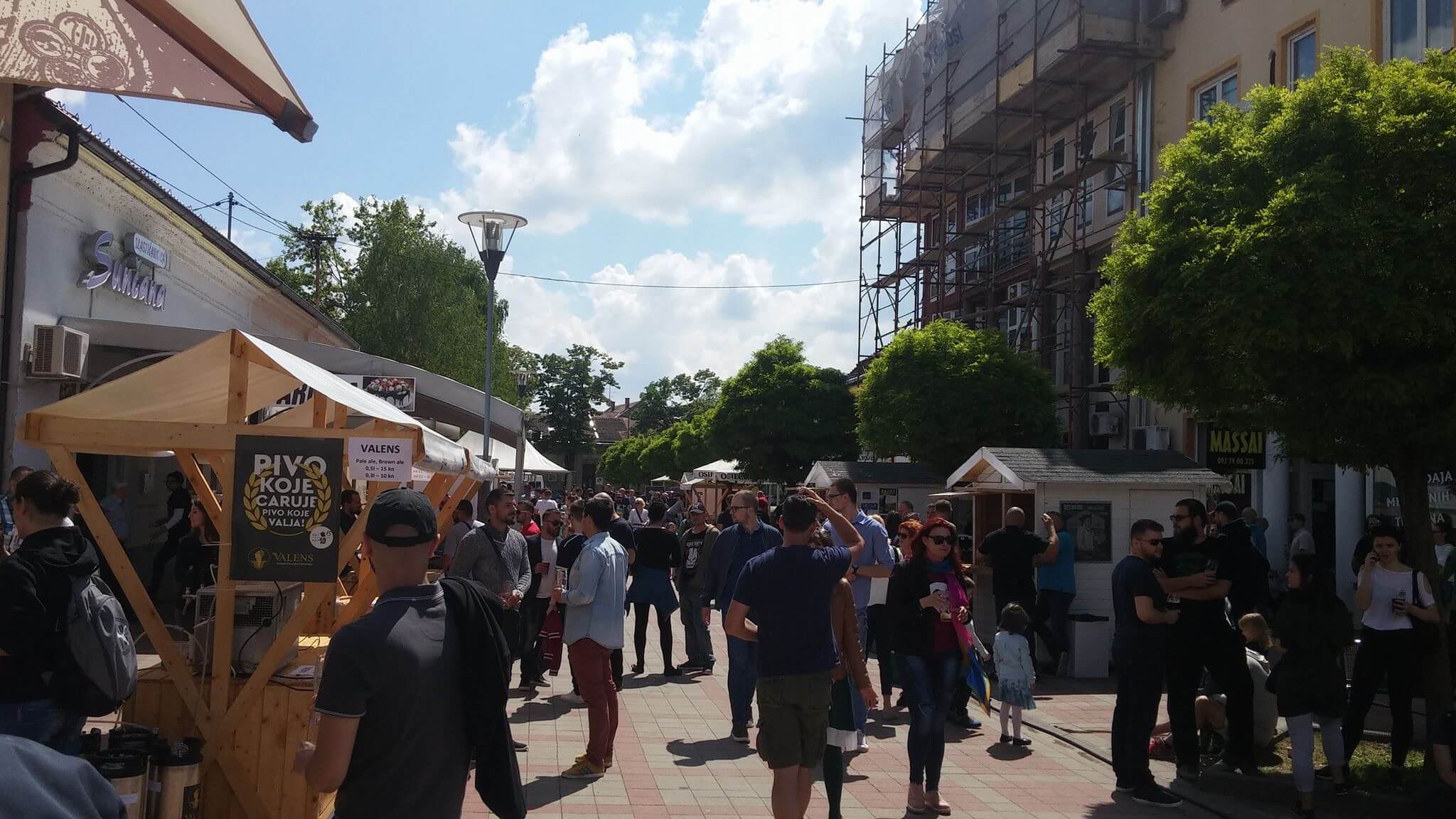
Craft Beer Festival in Osijek (Photo: Osijek CRAFT BEER Festival/Facebook)
Craft Beer Festival - sometime in May (to be determined)
How can Spring pass in Osijek without an event for beer lovers? In the last decades, Osijek has become a center for beer connoisseurs, not only in Eastern Slavonia but for beer enthusiasts all over Croatia. This fact is not surprising at all if we take into account that Osijek is also a center of multiple small breweries that produce various types of beers which have become iconic for this part of Croatia. Craft Beer Festival has been held last year during June but this year it’s probably coming back to its original date in May. We still don’t know the exact date. Nevertheless, the event will come back to the famous so-called “beer street” - Sun Street (Sunčana Ulica). For updates check their Facebook page.
If you’re interested in breweries in Osijek, check an article from our intern Toni.
After Osijek, we go further East and present cities of Vinkovci and Vukovar. Two historical Slavonian cities have a lot to offer with the support of surrounding small towns and their own events that enrich the lives of locals in Vukovar - Srijem County.
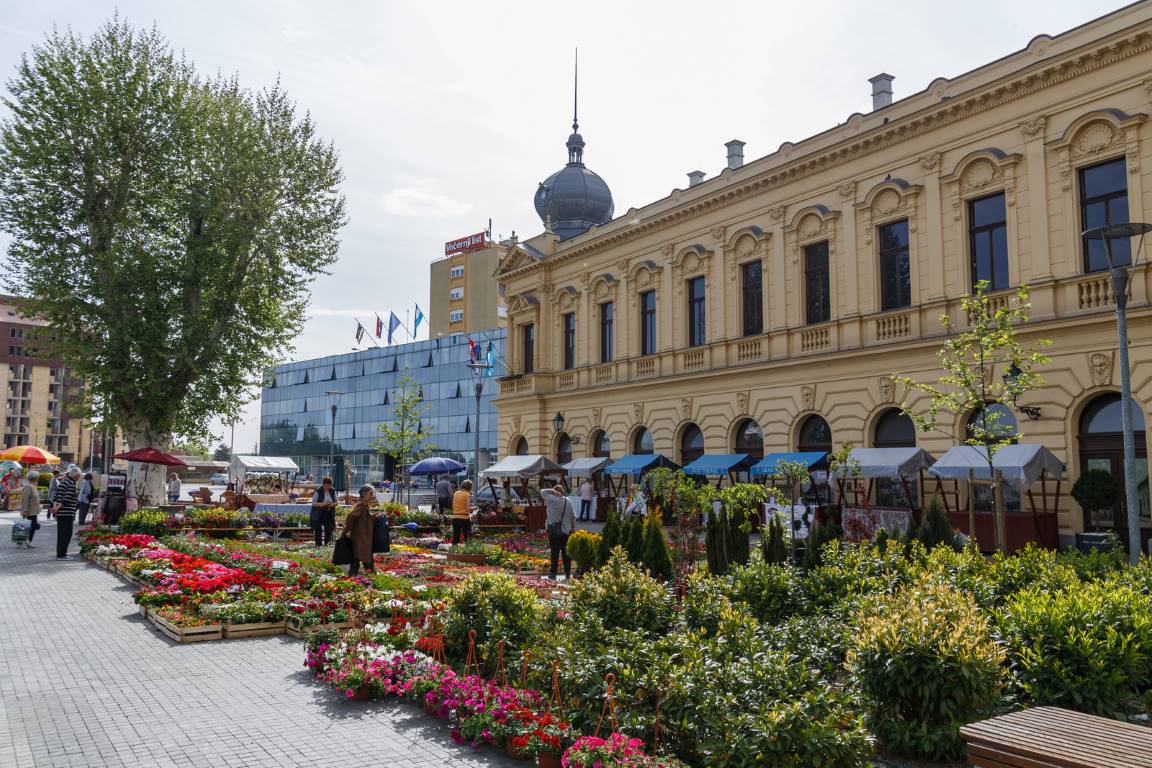
Flower Festival in Vukovar (Photo: Miroslav Slafhauzer/Turistička zajednica grada Vukovara)
Flower Festival - end of the April
Flower Festivals are a common event in Slavonia (we already had one in Osijek during Women’s Day). At the end of April every year, a Flower Festival is held in the center of Vukovar which brings together local and regional plant growers, florists, arrangers, related craftsmen, and lovers of flowers and ornamental plants. The Fair has sort of an exhibition and sales character which gives a completely different, colorful, and warmer look to the center of Vukovar. This event is also an overture for marking City Day.
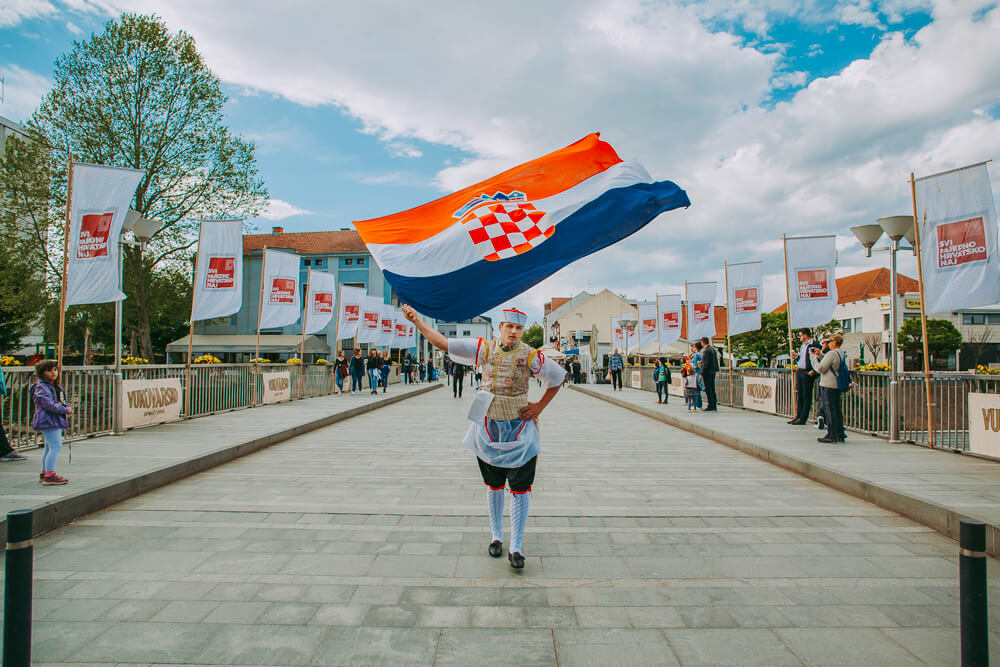
Svi zaJedno Hrvatsko Naj Festival in 2019 (Photo: svizajedno.eu/Galerija)
Svi zaJedno hrvatsko naj - cultural and tourist event - part of Vukovar City Day, 3rd of May
This festival is fairly new - it was firstly held in 2018, as a part of the European Year of Cultural Heritage. Its uniqueness lies in the fact that it is the first Croatian festival to present protected Croatian intangible cultural heritage on the national and UNESCO list with the most attractive tourist events, attractions, and destinations from all over Croatia. During the event, visitors have a chance of exploring various manifestations held all over Croatia by tasting autochthonous Croatian dishes and enjoying the offer of the best Croatian wines. Of course, what would be a Slavonian event without traditional music and dance groups? For more details, you can check their website.
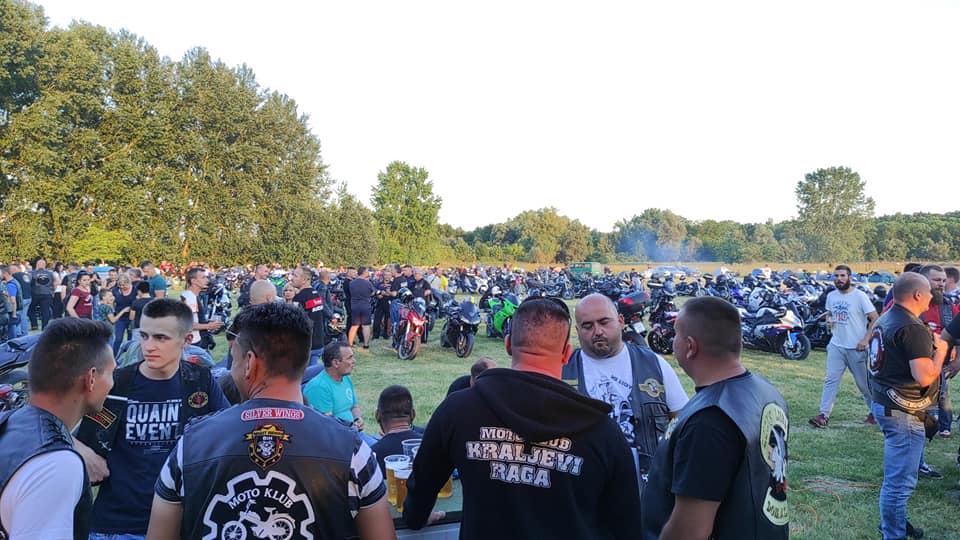
"Motorijada" in 2021 (Moto Klub Županja/Facebook)
Motorijada by Moto Club Županja - 10th of April
Motorijada (Moto Race) is an event that is organized by Moto Clubs all over Croatia. Motorcycle enthusiasts organize these events to promote, among other things, motorsports and use this opportunity to meet with their fellow motorcycle buddies. This April, Moto Club Županja is organizing the 16th Opening of Moto Season of Vukovar - Srijem County with the aim of drawing the attention of other road users to the presence and safety of motorcyclists in the traffic. They will start their tour in the village Rajevo Selo and go through multiple towns in Vukovar - Srijem County with the ending in the host city - Županja. Everyone is invited and if you’re a motorcycle enthusiast or just love looking at the motors, this is a great event to visit. For more information, check their Facebook page.
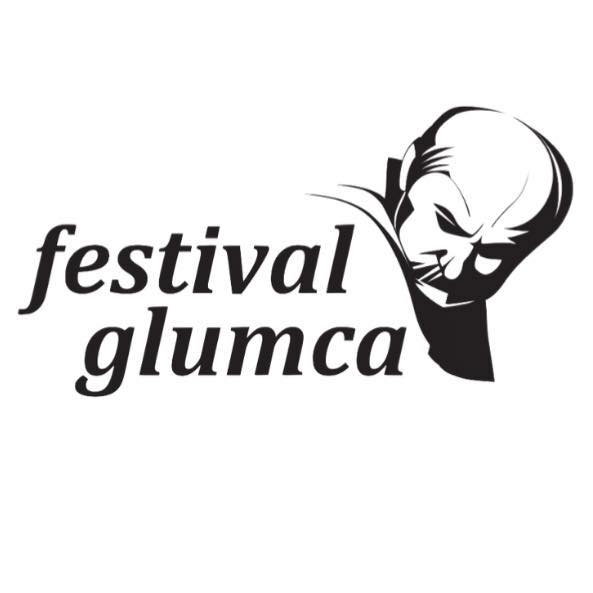
Logo of the Festival (photo: Festival Glumca/Facebook)
Actor’s Festival - all cities of Vukovar - Srijem County, 13 - 22 May
The festival was founded in 1994 by the Croatian Society of Dramatic Artists and Vukovar - Srijem County and it is the only festival in Croatia dedicated to the actor and their artistic work. Today, this event has grown into a festival that brings chamber and large ensemble performances to the audience. If you’re interested in the festival full of character, good acting, acting personality, talent, and originality, visit Vukovar - Srijem County from 13th to 22nd May this year. Every city will have its appropriate events surrounding this festival. For more, check their official website.
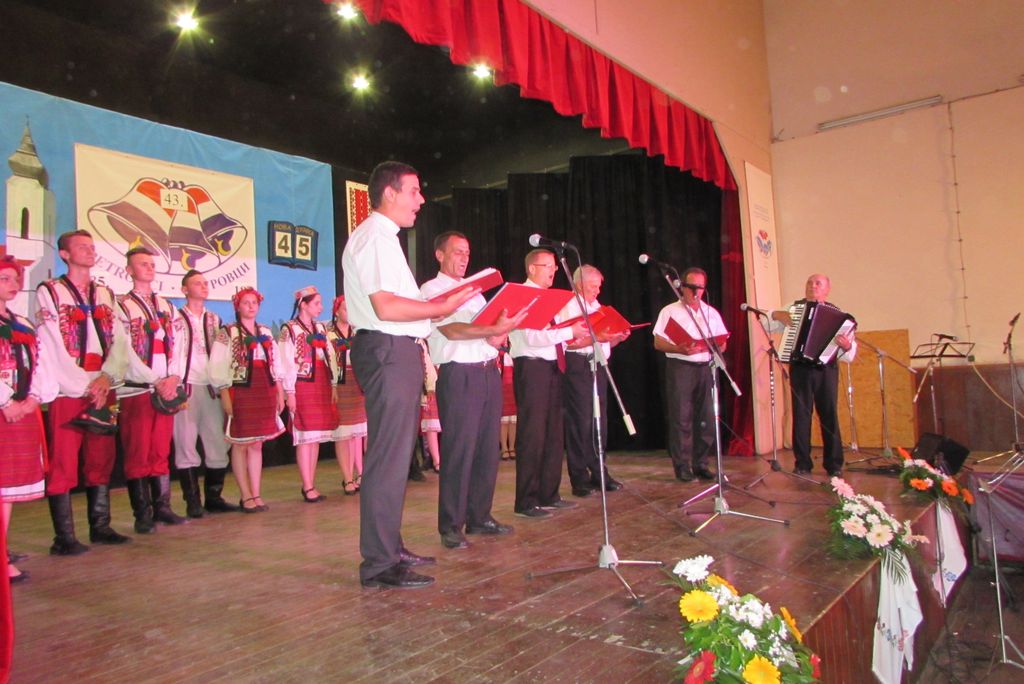
Petrovačko Zvono event few years ago (photo: savezrusina.hr)
Petrovačko Zvono - sometime in June, 49th edition
Rusyns are a national minority in Croatia with most of the residents residing in the village of Petrovci, which is located near Vukovar. Tradition, heritage, and constant maintenance of their culture for more than 40 years made this event one the most important in Vukovar - Srijem County. Rusyns from all over Croatia and other countries, visit Petrovci to connect to their fellow Rusyn people. They have a strong connection to Ukraine and their people, so if you’re nearby, visit this event, learn about the traditions of the people who’ve chosen Croatia as their home, and enjoy Petrovačko Zvono and its celebration of their heritage. For more details, you can visit their website here.
This is it for now. There are a lot more events that need mentioning, however, this article won’t be enough. TCN will bring you stories from some of these events and part two of places to visit in Eastern Slavonia is already on the way. Stay tuned!
Make sure to check out our dedicated travel section.
Zagreb's Shameful Ignorance of Eastern Croatia Revealed (Part 1)
February 3 - The level of ignorance among Croatians about what lies in the east of their country is staggering. And they are really missing out, for eastern Croatia is amazing.
I really don't know where to start.
Perhaps at 06:35 on November 16 last year. For it was then that I picked up American digital nomad videographer and emerging media star, Steve Tsenterensky, for a 6-day tour of eastern Croatia that I promised would blow his mind.
It blew his mind.
(Osijek, Full of Life - Osijek Tourist Board)
Prior to the trip, I asked Steve what he knew about Croatia east of Zagreb (he has been here for just over a year on this visit). Very little, he confessed openly - the war, Vukovar. That's it. Six days later he knew a hell of a lot more, and you can read an in-depth account of what was easily the most sensational trip in my 18 years in Croatia. In Slavonia. In November. Time to Tell the Truth about Slavonia Full of Life.
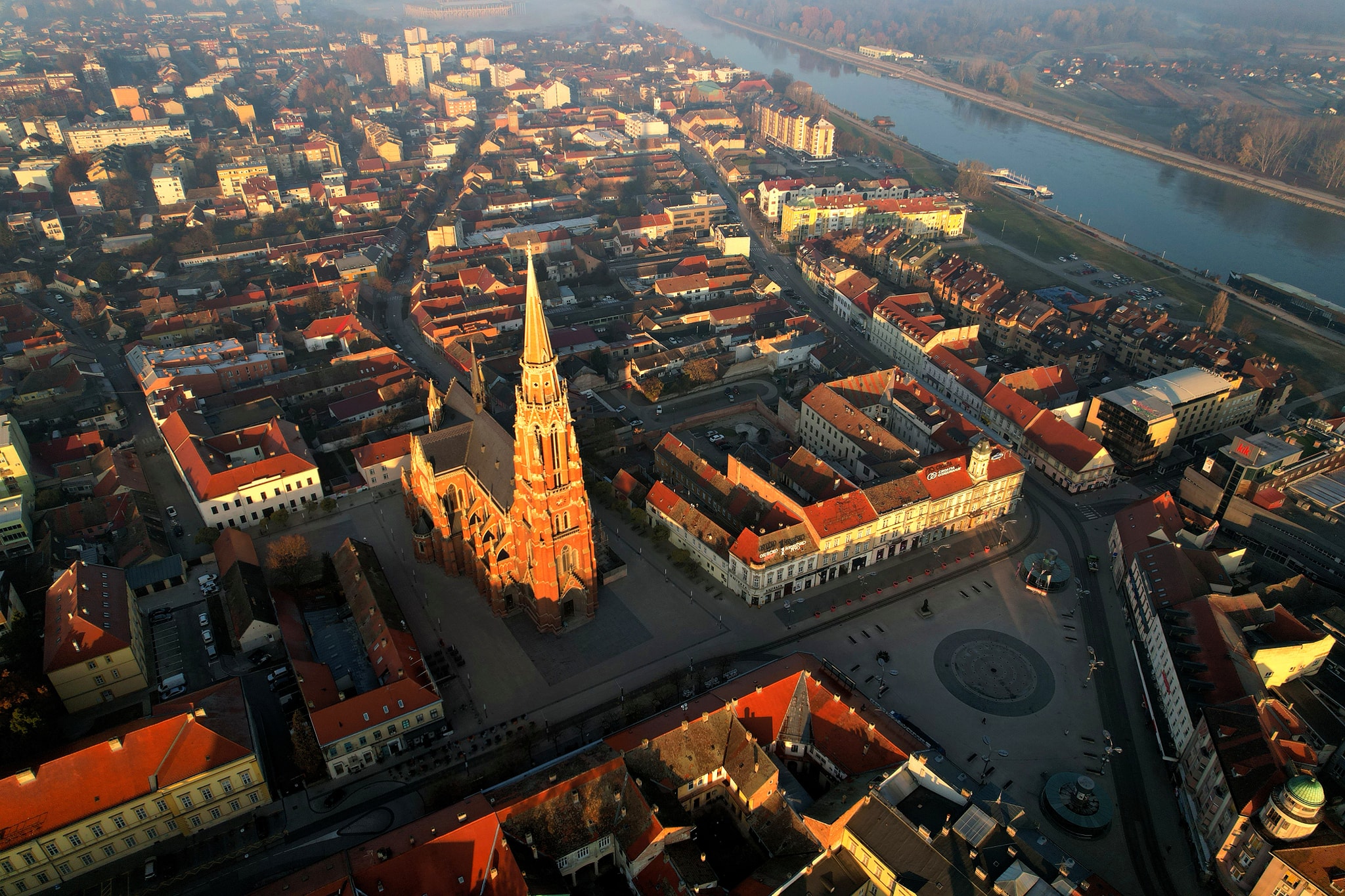
I posted a LOT on Facebook during our trip, and I was struck by the number of locals admiring the destinations and asking where I was. But I was truly unprepared for what happened when I got back to Zagreb. Local friend after local friend told me that they had never been to Slavonia - even though it is motorway all the way, and despite the fact that its most eastern point - Ilok - is closer to Zagreb than Split.
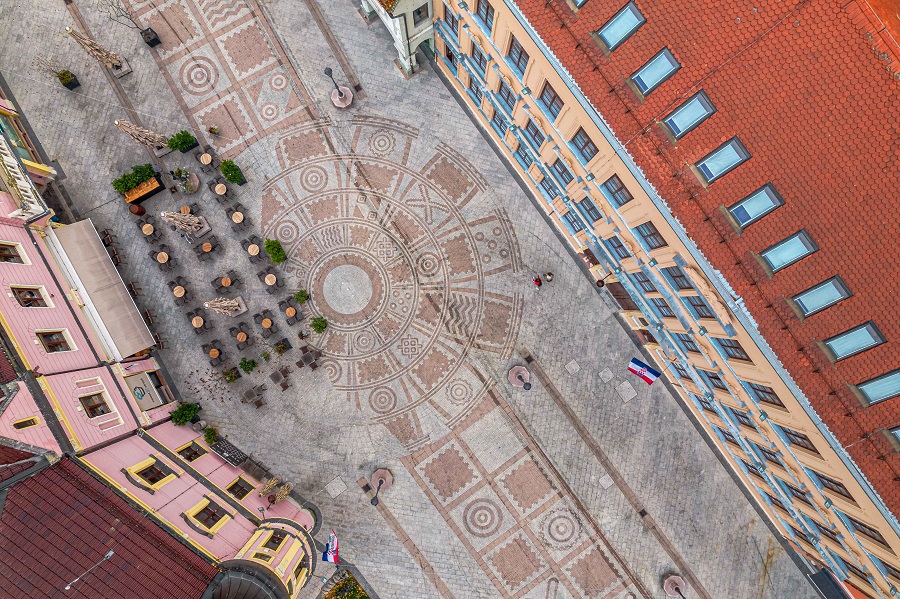
I never complain on social media - there is no point, as nobody cares, with so many of their own problems to deal with, but I posted on Facebook that I was genuinely shocked (not that I was bothered personally) how many of my Zagreb friends had never been to Slavonia. They were really missing out as the east is FANTASTIC.
And so it started in a predictable way. You are a rich foreigner (ha, if only) and we poor Croats only earn 4,000 kuna a month, so cannot afford to go. I rephrased my sentence. I was genuinely shocked (not that I am bothered) how many of my Zagreb friends who are among the 200,000 who go skiing abroad each and so have money, have never been to Slavonia.
Silence.
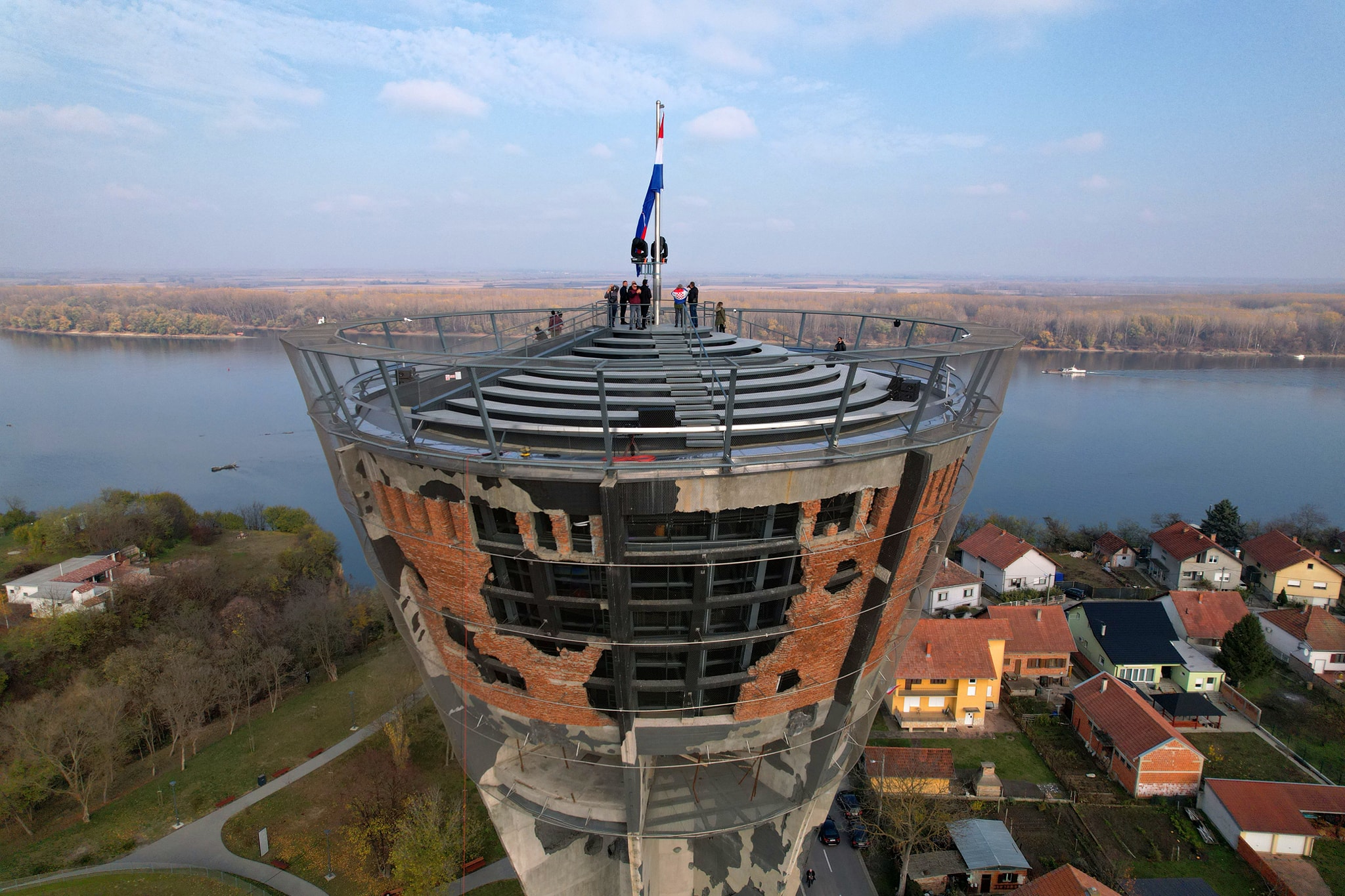
But then...
A very educated Dubrovnik friend of mine was in town and he had also never been to Slavonia. I decided to ask him three questions.
1. What is the biggest town in Baranja? Hmmm - is it Vukovar?
2. Can you name three famous buildings in eastern Croatia, NOT including the Vukovar Water Tower? Hmmm - nope.
3. Can you name three Slavonian dishes not including kulen? Hmmm - nope.
I have asked those first two questions (biggest town in Baranja, 3 famous buildings) to 30 friends in Zagreb over the last few weeks. Only one person could answer both questions correctly.
And the sad thing is that Osijek is the most vibrant city in all Croatia, certainly at this time of year. It has fantastic energy, much different to the media portrayal of emigration and decline.
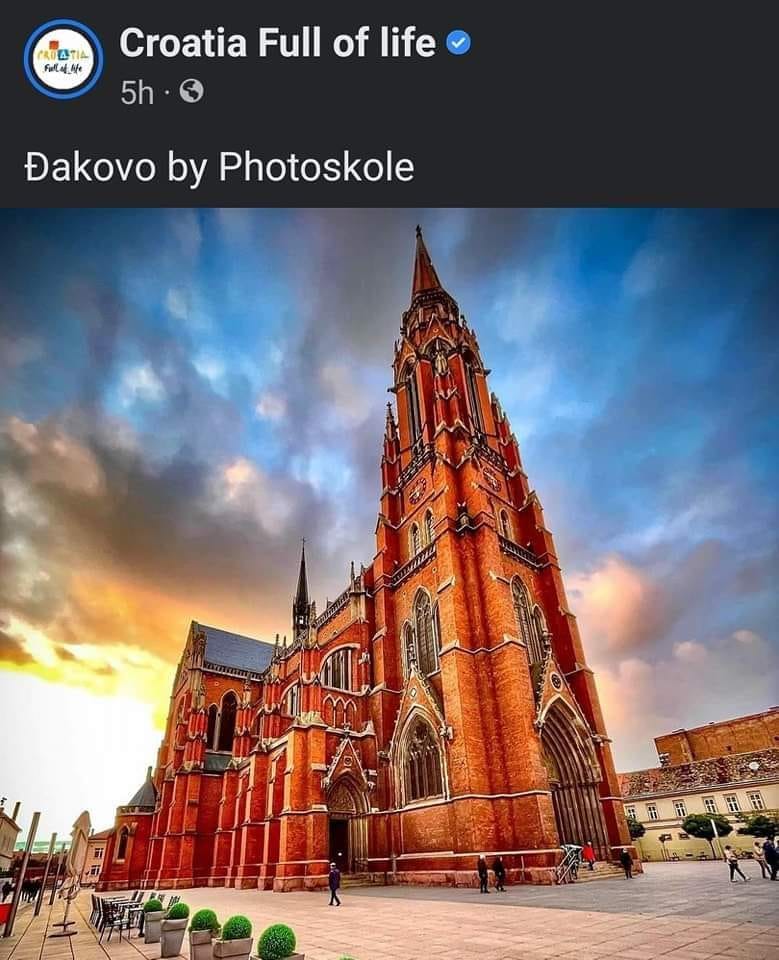
And so when the Croatia Airlines magazine article had Osijek on the Danube (it is on the Drava), and the Kingdom placed Djakovo Cathedral in Osijek (does this mean that Djakovo is actually on the Danube now?), it might not be total incompetence as it seems, but perhaps total ignorance, with an incompetence chaser.
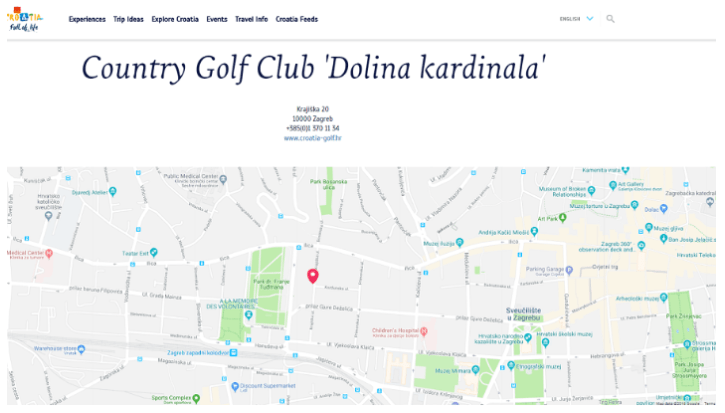
But then again... any national tourism board who can promote a full 18-hole golf course in central Zagreb is a bit special. Yes really - read more in Tourism Quiz of the Summer: How Many Golf Courses Will Croatia Have Next Week?
I came up with an idea to film a tourism questionnaire on Ban Jelacic to highlight the problem (I will still do this), offering a free rakija from a Slavonian colleague in traditional dress to anyone who takes part.
And then yesterday... This.
Index.hr, super quick as usual, beat me to it. An Index journalist took to the streets of Zagreb and showed locals photos from Pula, Virovitica, Osijek, Karlovac, Rijeka, Rovinj, Varaždin, Đakovo, Dubrovnik and Split.
The continent and the coast. You don't need to understand Croatia to see the results.
I will still do my survey, as it is part of a bigger project to Make Osijek Great Again (#MOGA).
A project which received strong support from Minister of Tourism and Sports, Nikolina Brnjac, at our first meeting last month.
Zagreb is a natural source of tourism for Slavonia, and this is certainly not charity. In my opinion, a big difference between tourism in Slavonia and tourism in Dalmatia is that nobody who visits Slavonia comes back disappointed.
And there is so much to see and do. This video below is for another project, but it felt apt to add it here. For those who know the east well, do you recognise all the places? And for those who don't know Slavonia at all, go and have your mind blown, as Steve did - this is his video.
And if you are interested in the #MOGA project and have something to contribute, come to the TCN MOGA networking drinks at Pivnica Runda in Osijek on Monday at 19:00.
Want to know more about Osijek? Check out the Total Croatia Osijek in a Page guide.
OLT Osijek to Transform: Museums, Sport Incubator, Olympic Swimming Pool
January the 26th, 2022 - Eastern Croatia is often (very wrongly) overlooked, and the City of Osijek is one town that is making a stand in several ways when it comes to turning its image around. The old OLT Osijek is set to undergo a transformation, with a unique sport incubator, museums and even an Olympic swimming pool thrown in.
As Poslovni Dnevnik/Suzana Varosanec writes, the praiseworthy revitalisation project of the OLT Osijek area, one of the largest projects being implemented in Osijek-Baranja County and in the City of Osijek, is still waiting for its visible construction phase to begin. It will most likely two more years before a large area in the very heart of Osijek is turned into a large construction site.
Therefore, the focus is on key activities that will enable this in connection with the development of the Urban Development Plan, which will be a prerequisite for defining the content in this area, which is the responsibility of the City of Osijek.
As part of the project entitled "The preparatory documentation for the strategic project for the revitalisation of the brownfield OLT Osijek area" in the amount of 2,777,500 kuna, and co-financed by the European Union (EU), conservation documentation also needs to be prepared.
The urban plan
This is the basis for the preparation of the urban-conservation base, which should be incorporated into the necessary spatial planning documentation. Conservation documentation, in addition to the catalog of all buildings, also includes various studies of research works and recordings of the existing condition for the buildings - these are the foundry with a lathe, an office, an administrative building, a tool shop and a water tower.
According to a request from Osijek-Baranja County, after the Urban Development Plan is drawn up and made, the project documentation will need to be prepared, and according to county prefect Ivan Anusic, they want to revive the OLT Osijek space which is located almost right in the city centre.
"In the immediate vicinity of the University Campus, OLT Osijek will receive additional support in terms of the scientific work needing to be done because our plan is to create a Science Research Centre, then a sports incubator where experts will work with children from an early age to guide them to the sport that suits them best, both according to their individual physical predispositions and according to their personal affinities.
There will also be support for the families of young athletes, as we've repeatedly witnessed that the top athletes we can truly be proud of in this county are the product of our own efforts and work, as well as family sacrifice. Our goal is to institutionalise this type of support,'' Anusic pointed out.
According to him, the construction of an Olympic swimming pool, which the City of Osijek currently lacks, is planned along with a number of halls, while the sport incubator will be the first of its kind in the wider area, so the new purpose of OLT Osijek will be of great importance for all of Eastern Croatia.
"It's also known that Osijek has a long tradition on the cultural scene, but in recent years there has been a lack of space for the development of alternative types of art. The plan also includes museums, an amphitheatre and various other content that will be generated in the time ahead as something which is necessary to improve the economic, scientific, social and cultural development of the city and the wider county,'' said County Prefect Anusic.
One of the basic preconditions for the realisation of all of this is the gift contract concluded last week between the state and this county for very valuable property that previously became the property of the state through their purchase in the bankruptcy of Osijek's failed metal company.
This is an area which boasts an abandoned and unused industrial complex, spanning a total area of 59,046 m2, and the plan is to be implemented over several phases of design and construction. The first stage of project implementation refers to the economic content, which consists of several components, while the second stage of the project is related to incentive housing for 1,600 inhabitants, or 380 apartments in total.
For more, check out Made in Croatia.
Brod-Posavina County, an Example of Tourism Excellence in Eastern Croatia
September 28, 2021 - Nothing to envy the regions of Istria or Dalmatia when it comes to tourism statistics in the last summer months, as Brod-Posavina county has also broken its own records with an attractive offer that combines peace, comfort, and nature.
The proof that tourism does not take place only on the Adriatic is Brod-Posavina County, which from the beginning of the year to September 21 reached 82% of overnight stays from the best pre-pandemic 2019. And the great growth trend continues, reports HrTurizam.hr.
Judging by the tourist results, Brod-Posavina County has confirmed its status as a year-round destination. Although it is not over yet, the month of September is better than the record 2019. It is also encouraging that 37,357 overnight stays from the beginning of the year to September 21 increased by 35% compared to the same period in 2020.
"If we look at overnight stays by type of accommodation, the most sought-after facilities in the household are farms, ranches, family farms, holiday homes in rural areas, which recorded an increase of as much as 166% compared to last year. The September record-holders in overnight stays are the Tourist Board of the Municipality of Garčin with growth of six times and the Municipality of Cernik, which realized three times the number of overnight stays compared to the same month last year. These statistics indicate only one thing - guests are looking for indigenous, original, and tourist unspent with a stay in nature, and this is exactly what we offer in our county", said Ruzica Vidakovic, director of the Tourist Board of Brod-Posavina County.
It is a happy fact that 15 new facilities with 124 beds have been opened this year, but also the fact that 60% of the total number of tourists are foreigners and 40% are domestic guests.
Regarding the position and growth index of overnight stays for the first eight months of 2021, if we compare with the record 2019, Brod-Posavina County within the cluster Slavonia, five Slavonian counties, achieved an index of 80.28 compared to the average of Slavonia, which is 69.74.
Ethno-eco village Stara Kapela, Ramarin Ranch, Dida Tunje House, Savus Farm, Matin and Ana's apartment, Kereković Estate, Opođe Rural Household, Paljevina Farm, Villa Melani, Villa Čop, holiday houses “Regoč” and “Atar”… - they are real discoveries for lovers of rural tourism. Here you will feel the beauty of the Slavonian village, in the peace and quiet of nature, get rid of stress and find yourself again.
Brod-Posavina County is networked with trails, so almost every corner can be explored by bike. Slavonski Brod, Nova Gradiška, picturesque villages, forests, the riverbank, choose what you like and go on an adventure. This is an opportunity to visit the artificial lakes Petnja and Ljeskova vode, a special reserve of forest vegetation, and the rest of the Slavonian rainforest Prašnik, erosive canyon Pljuskaru with several waterfalls and caves, ornithological reserves Jelas and Bara Dvorina, pasture Gajnu with wetland flora and fauna, cattle, Posavina horses, and black Slavonian pigs. A green paradise for all those who want a holiday in a different way.
“We thank all the stakeholders involved in creating and creating a recognizable and indigenous brand of our destination as well as tourist facilities. We also thank all stakeholders of the private and public sector for their cooperation and support in the implementation of a number of joint projects, thus creating new opportunities and content", concludes Vidaković.
For more, follow our travel section.


